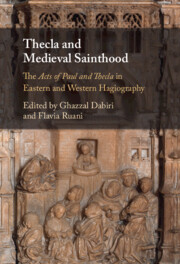Part II - An Act to Surpass
Published online by Cambridge University Press: 06 May 2022
- Type
- Chapter
- Information
- Thecla and Medieval Sainthood<I>The Acts of Paul and Thecla</I> in Eastern and Western Hagiography, pp. 195 - 317Publisher: Cambridge University PressPrint publication year: 2022



